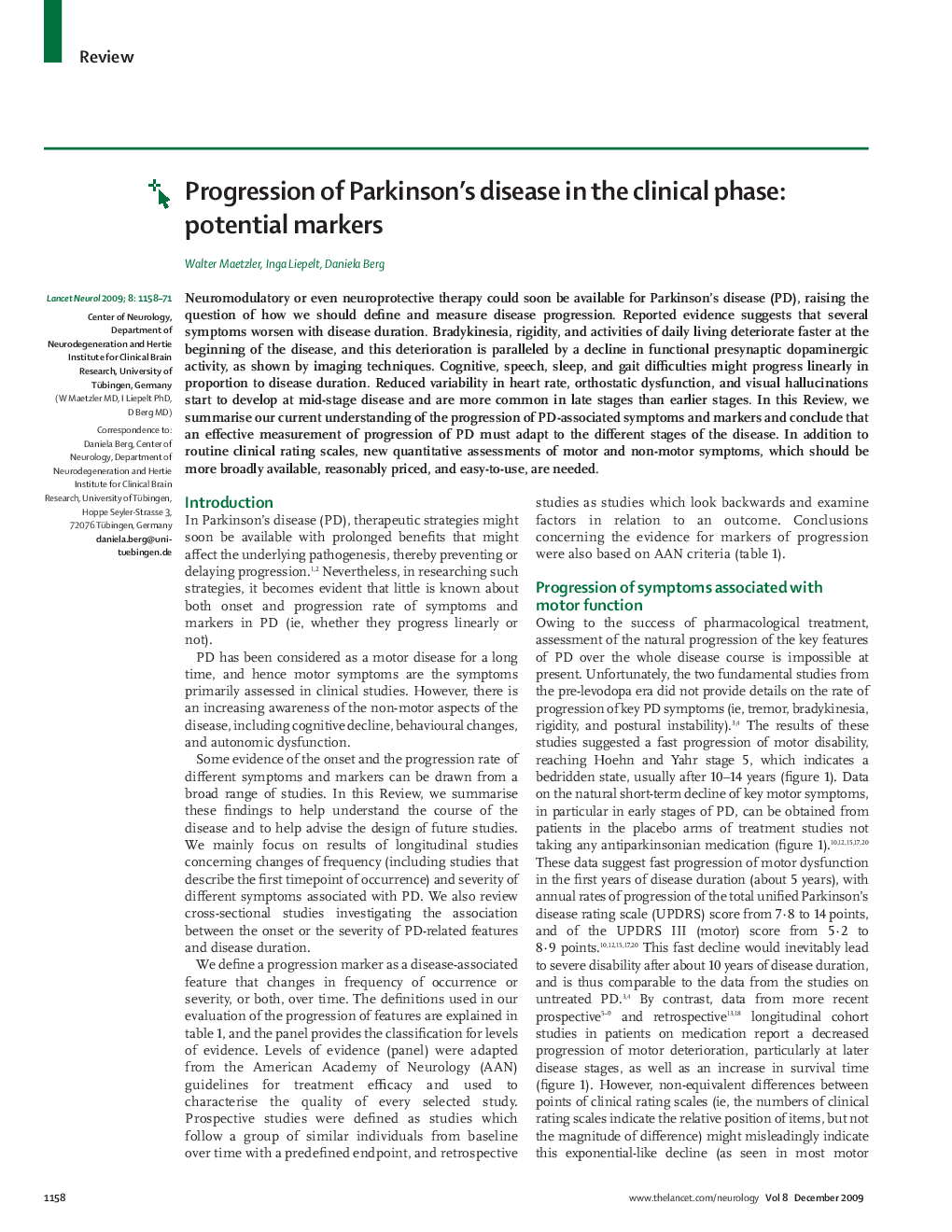| Article ID | Journal | Published Year | Pages | File Type |
|---|---|---|---|---|
| 3067392 | The Lancet Neurology | 2009 | 14 Pages |
SummaryNeuromodulatory or even neuroprotective therapy could soon be available for Parkinson's disease (PD), raising the question of how we should define and measure disease progression. Reported evidence suggests that several symptoms worsen with disease duration. Bradykinesia, rigidity, and activities of daily living deteriorate faster at the beginning of the disease, and this deterioration is paralleled by a decline in functional presynaptic dopaminergic activity, as shown by imaging techniques. Cognitive, speech, sleep, and gait difficulties might progress linearly in proportion to disease duration. Reduced variability in heart rate, orthostatic dysfunction, and visual hallucinations start to develop at mid-stage disease and are more common in late stages than earlier stages. In this Review, we summarise our current understanding of the progression of PD-associated symptoms and markers and conclude that an effective measurement of progression of PD must adapt to the different stages of the disease. In addition to routine clinical rating scales, new quantitative assessments of motor and non-motor symptoms, which should be more broadly available, reasonably priced, and easy-to-use, are needed.
